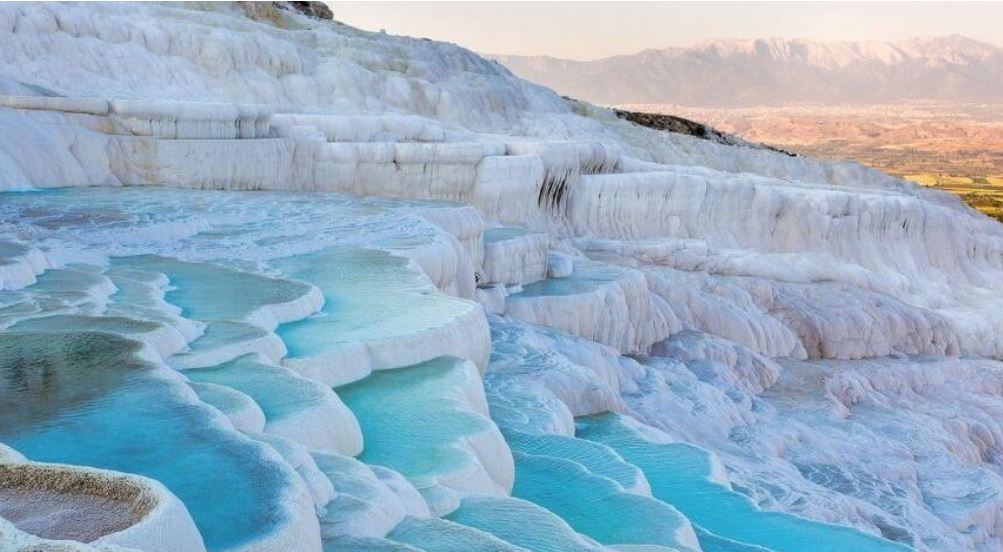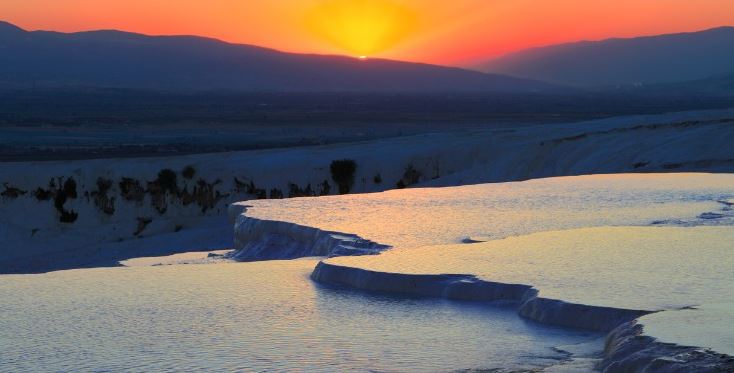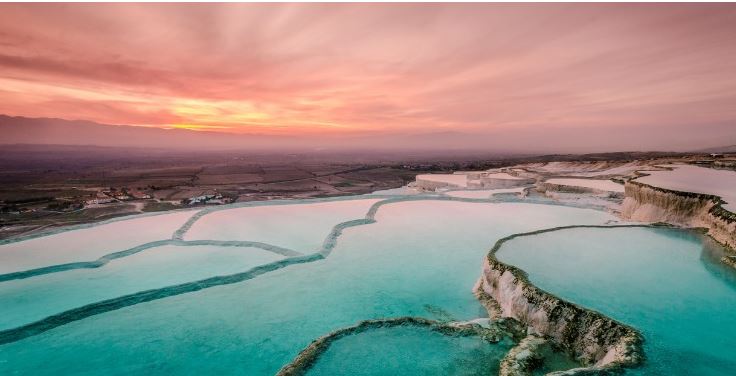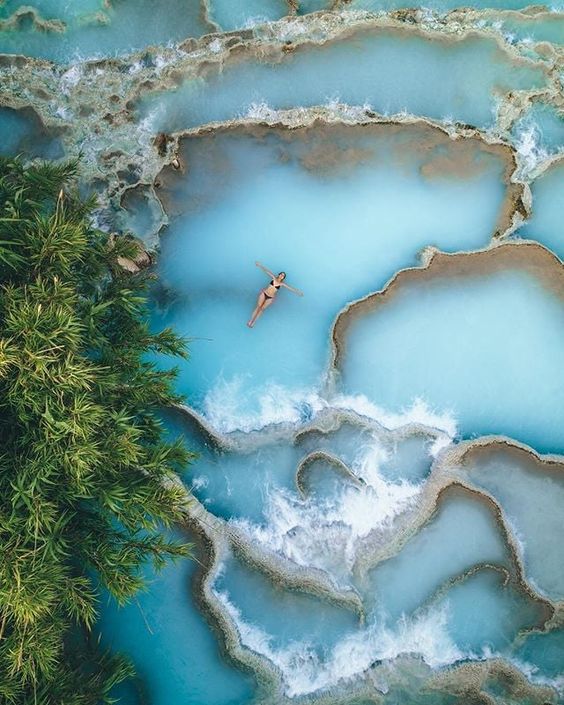
Pamukkale, also known as the “Land of White Travertines,” is a stunning natural wonder located in the Denizli province of Turkey. Its name literally translates to “cotton castle,” which is a fitting description for the fluffy, white travertine terraces that cover the landscape.
The formation of these terraces dates back thousands of years, to a time when hot springs bubbled up from beneath the earth’s surface. As the water flowed over the landscape, it left behind deposits of calcium carbonate that gradually built up into the magnificent terraces we see today.


Pamukkale’s travertine terraces are not only a sight to behold, but they also have some unique health benefits. The thermal waters that flow through the terraces are rich in minerals like calcium, magnesium, and bicarbonate, which are said to have healing properties for various ailments. Visitors can take a dip in the warm, mineral-rich pools and even walk along the travertine terraces barefoot, feeling the mineral-rich waters on their skin.


In addition to the natural wonders of the travertine terraces, Pamukkale is also home to some impressive ancient ruins. The city of Hierapolis was founded on top of the terraces in the 2nd century BC, and its ruins can still be seen today. The most notable of these ruins is the ancient Roman theater, which is one of the best-preserved examples of its kind in the world.

Visitors to Pamukkale can also explore the nearby hot springs and thermal baths, which offer a variety of relaxing and rejuvenating treatments. The town of Pamukkale itself has a charming, laid-back atmosphere, with plenty of cafes and restaurants serving up delicious Turkish cuisine.

Overall, Pamukkale is a must-see destination for anyone visiting Turkey. Its unique combination of natural wonders and ancient history make it a truly unforgettable experience.





